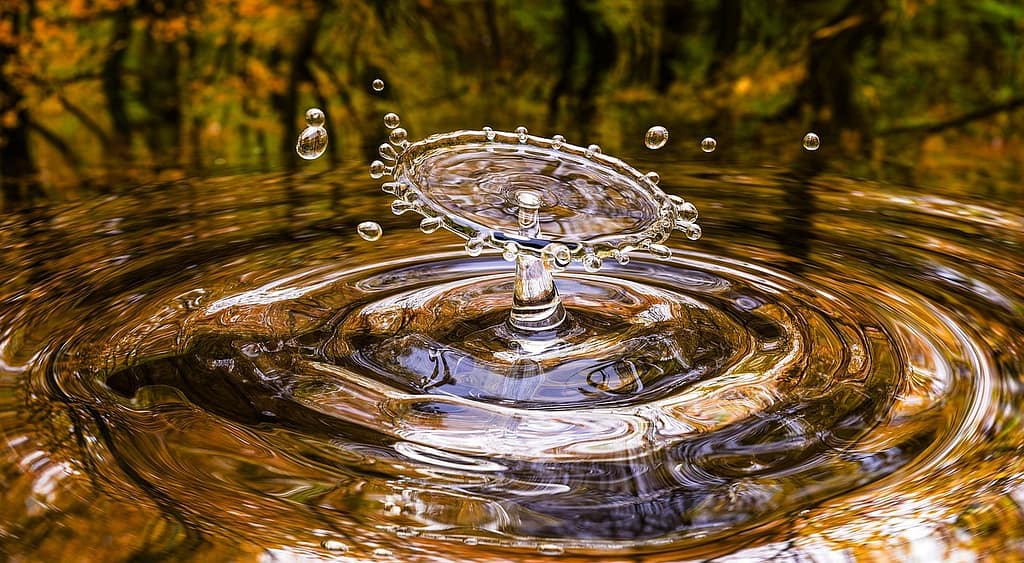Introduction
Have you heard about alkaline water and wondered what all the buzz is about? Alkaline water has been gaining popularity for its supposed health benefits, and many people are curious about how to make it at home. This article will guide you through everything you need to know about basic water, from its benefits to various methods of preparing it yourself. So, let’s dive in and explore the world of homemade alkaline water!
What is Alkaline Water?
Definition
Alkaline water is water that has a higher pH level than regular drinking water. The pH scale measures how acidic or basic a substance is, ranging from 0 to 14. A pH of 7 is considered neutral, which is the pH level of pure water. It typically has a pH level between 8 and 9.
pH Scale
Understanding the pH scale is crucial to grasping what makes alkaline water unique. The scale ranges from 0 (most acidic) to 14 (most alkaline). Each number on the scale represents a tenfold difference in acidity or alkalinity. For example, a pH of 8 is ten times less acidic than a pH of 7.
Sources of Alkaline Water
Basic water can be found naturally in springs where it picks up minerals that increase its alkalinity. It is also available commercially in bottled form, often labeled as “alkaline” or “ionized” water. However, many people prefer to make their own water at home for convenience and cost savings.

Benefits of Alkaline Water
Health Claims
Alkaline water enthusiasts claim that it offers a range of health benefits, including improved hydration, enhanced metabolism, and better digestion. Some even believe it can help detoxify the body, reduce acid reflux, and boost overall wellness.
Scientific Evidence
While some studies suggest that Basic water can benefit certain health conditions, the scientific community is still divided. For instance, a 2012 study published in the Annals of Otology, Rhinology & Laryngology found that alkaline water with a pH of 8.8 may help deactivate pepsin, an enzyme involved in acid reflux. However, more research is needed to confirm these findings and establish a broader consensus.
Potential Risks
It’s essential to consider potential risks. Drinking alkaline water in moderation is generally safe for most people. However, excessive consumption can disrupt your body’s natural pH balance, leading to potential side effects like gastrointestinal issues and skin irritations.

Ingredients and Tools Needed for Homemade Alkaline Water
Basic Ingredients
To make Basic water at home, you’ll need a few common ingredients:
- Baking soda
- Lemon
- pH drops
Advanced Ingredients
For those looking to experiment further, you might consider using:
- Himalayan salt
- Magnesium powder
Tools and Equipment
Additionally, some tools can make the process easier:
- pH strips (to test the water’s pH level)
- Water filters (to purify your water before alkalizing)
- Alkaline water pitchers (designed to filter and alkalize water)
Method 1: Using Baking Soda
Introduction
Baking soda is a simple and effective way to make alkaline water at home. It’s a method that’s accessible to everyone and requires minimal ingredients.
Step-by-Step Instructions
- Gather Ingredients: You’ll need 1/8 teaspoon of baking soda and 1 glass (8 ounces) of purified water.
- Mix: Add the baking soda to the water.
- Stir: Stir the mixture thoroughly until the baking soda is completely dissolved.
- Test: Use a pH strip to test the water. It should have a pH level between 8 and 9.
Tips and Precautions
- Measure Accurately: Too much baking soda can make the water taste unpleasant and may cause health issues.
- Consult a Doctor: If you have a medical condition or are on a sodium-restricted diet, consult your doctor before consuming baking soda.
Method 2: Using Lemon Juice
Introduction
Lemon juice, despite being acidic, has an alkalizing effect once metabolized. This method is a natural way to make your water alkaline.
Step-by-Step Instructions
- Gather Ingredients: You’ll need one lemon and one glass (8 ounces) of purified water.
- Squeeze: Squeeze the juice of half a lemon into the water.
- Mix: Stir well to combine the lemon juice and water.
- Optional: Let the water sit for 30 minutes to allow the lemon to further alkalize the water.
Tips and Precautions
- Organic Lemons: Use organic lemons to avoid pesticides.
- Dilution: Adjust the amount of lemon juice to suit your taste preferences.
Method 3: Using pH Drops
Introduction
pH drops are a convenient way to make alkaline water, especially for those who are frequently on the go.
Step-by-Step Instructions
- Purchase pH Drops: Ensure you buy pH drops from a reputable brand.
- Add Drops: Follow the instructions on the bottle, usually adding a few drops to a glass (8 ounces) of purified water.
- Stir: Stir the water to mix the drops thoroughly.
- Test: Use a pH strip to verify the water’s pH level.
Tips and Precautions
- Read Instructions: Different brands have different concentration levels, so always read the instructions.
- Storage: Keep pH drops out of direct sunlight to maintain their effectiveness.
Method 4: Using Water Ionizers
Introduction
Water ionizers are machines designed to alkalize water through electrolysis. They are an investment but provide a reliable source of alkaline water.
Step-by-Step Instructions
- Purchase Ionizer: Invest in a high-quality water ionizer.
- Install: Follow the manufacturer’s instructions to install the ionizer.
- Select pH Level: Choose your desired pH level on the machine.
- Dispense Water: Collect the ionized water directly from the machine.
Tips and Precautions
- Regular Maintenance: Clean the ionizer regularly to ensure it functions correctly.
- Research: Read reviews and research brands before purchasing to ensure you buy a reliable product.
Method 5: Using Alkaline Water Pitchers and Filters
Introduction
Alkaline water pitchers and filters are convenient for daily use and are often more affordable than water ionizers.
Step-by-Step Instructions
- Purchase Pitcher: Choose an alkaline water pitcher or filter system.
- Assemble: Follow the instructions to assemble the pitcher or filter.
- Fill: Pour tap water into the pitcher or filter system.
- Wait: Allow the water to filter through and alkalize.
- Test: Use a pH strip to test the water’s pH level.
Tips and Precautions
- Filter Replacement: Regularly replace the filters as recommended by the manufacturer.
- Storage: Store the pitcher in a cool, dark place to maintain the water’s alkalinity.
Comparing Different Methods
Cost Analysis
- Baking Soda and Lemon Juice: These methods are the most cost-effective, requiring only inexpensive, readily available ingredients.
- pH Drops: Moderately priced, with a bottle lasting for several weeks or months.
- Water Ionizers: The most expensive upfront but provide a long-term solution.
- Pitchers and Filters: Mid-range cost, with ongoing expenses for filter replacements.
Ease of Use
- Baking Soda and Lemon Juice: Simple and quick methods, requiring minimal equipment.
- pH Drops: Extremely easy and portable.
- Water Ionizers: Requires initial setup but is convenient once installed.
- Pitchers and Filters: Easy to use but require regular filter changes.
Effectiveness
- Baking Soda: Highly effective at increasing pH but may alter taste.
- Lemon Juice: Naturally alkalizing but may not achieve as high a pH.
- pH Drops: Consistently effective at achieving desired pH levels.
- Water Ionizers: Highly effective with adjustable pH settings.
- Pitchers and Filters: Effective and convenient for daily use.
Storing Alkaline Water
Best Practices
To maintain the pH level of your homemade alkaline water, follow these storage tips:
- Use Glass Containers: Store the water in glass containers to avoid chemical leaching from plastics.
- Refrigerate: Keep the water in the refrigerator to maintain its freshness and pH level.
- Avoid Sunlight: Store containers away from direct sunlight, which can affect the water’s pH.
Containers
- Glass Bottles: Ideal for storing and maintaining the purity of alkaline water.
- Stainless Steel Bottles: Another good option for preserving the pH level and keeping the water cool.
Frequently Asked Questions
Common Queries
Q: How much alkaline water should I drink daily?
A: It’s recommended to start with one to two glasses a day and gradually increase based on how your body responds.
Q: Can I drink alkaline water every day?
A: Yes, but it’s best to monitor how your body reacts and consult with a healthcare professional if you have any concerns.
Q: Does boiling water affect its pH level?
A: Boiling water can slightly lower its pH, but it generally remains within the alkaline range.
Expert Opinions
Dr. John Smith, a nutritionist, says, “While the benefits of alkaline water are still being researched, many people find it helpful for hydration and acid reflux. It’s important to listen to your body and enjoy it in moderation.”
Conclusion
Summary
Alkaline water offers potential health benefits and is easy to make at home with a variety of methods. From using simple ingredients like baking soda and lemon juice to investing in water ionizers, there’s an option for everyone.
Final Thoughts
Experiment with different methods to find what works best for you. Remember to monitor your body’s response and consult with a healthcare professional if needed. Making your own alkaline water can be a fun and healthful addition to your daily routine.
Call to Action
Ready to try making your own alkaline water? Gather your ingredients and start experimenting today! Share your experiences and favorite methods with friends and family, and enjoy the potential benefits of this healthful beverage.
References
- Annals of Otology, Rhinology & Laryngology. (2012). “Potential Benefits of pH 8.8 Alkaline Drinking Water as an Adjunct in the Treatment of Reflux Disease“.
- Healthline. “Alkaline Water: Benefits and Risks“.
- Medical News Today. “What are the Benefits of Alkaline Water?“




